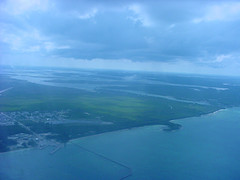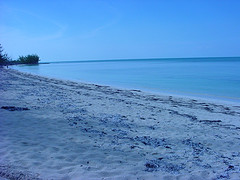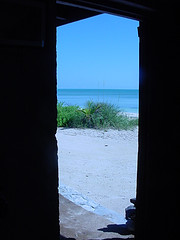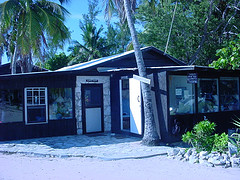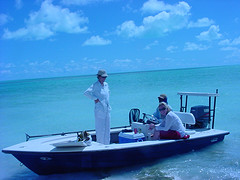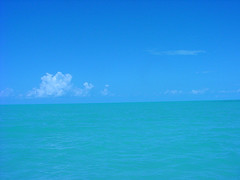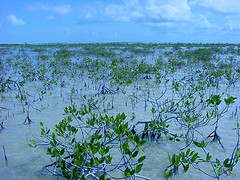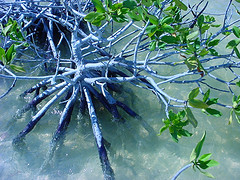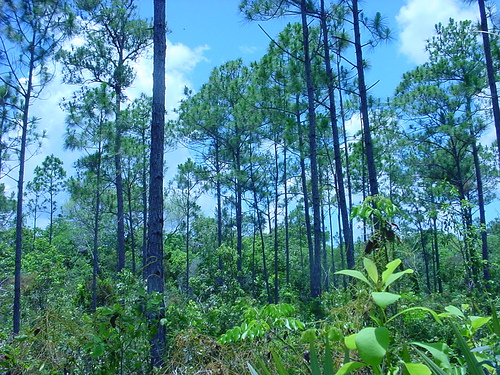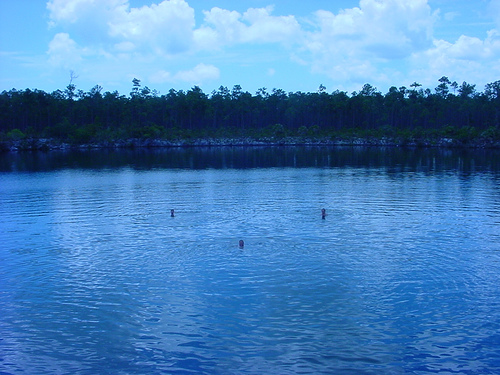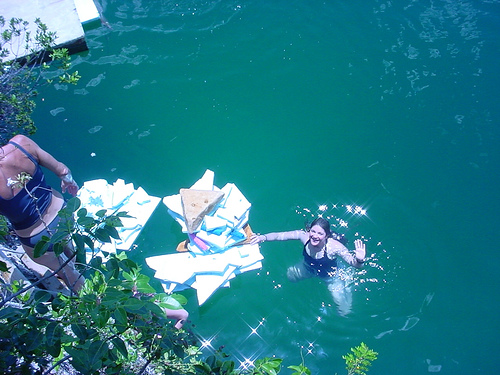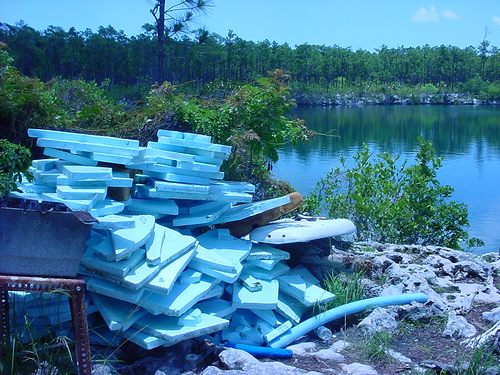
Saving the Great Bahama Banks
Two weeks ago, I had the opportunity to take an incredible trip to the Bahamas. I wasn’t there to relax and enjoy myself for a vacation, though I certainly did some relaxing and had a fabulous time. I was there to see the Grand Bahama Banks- and why they need to be protected.
There are over 700 islands in the extensive collection that together form the Bahamas, and they all have their different charms. New Providence Island is the center of the tourist industry, onto which quite a few resorts and bunches of hotels, bars and restaurants crowd. But if you never leave New Providence, and you take it to be the whole of the Bahamian experience, you’ve seen just 1/700th of this amazing ecosystem and met just a few of its people.
Andros Island (above, from the air), is the largest of the Bahamian islands, and lies just a 10-minute small plane ride from the cosmopolitan New Providence. The Nature Conservancy is working with the Bahamas National Trust and the Kerzner Marine Foundation to protect the Western waters of Andros, called the Great Bahama Banks.
Before I started my work, I explored the beach of Small Hope Bay Lodge (a 60’s-style eco hotel where I stayed) which was natural sand, covered in bits of seaweed, shells, and old coral. I snorkelled in the water below and spotted starfish, anenomes, about 10 different kinds of fish, and some brain and other corals holding on (for information on coral click here, for information on the devastation of coral in the Caribbean, click here.)
Looking out of one of the doors of Small Hope Bay Lodge and the Lodge itself.
The Lodge on the Eastern side of the island was one of the few places to stay, so it took us several hours by van and then on the boat below, to get to the Western side of the island. It is as deserted as it looks; there are no major towns or settlements on this side of the island.
Our guide, the extremely well-informed Shawn Leadon, said sometimes its hard to tell the difference between ocean and sky, and it’s easy to see why (below). This very shallow (about 2-4 feet deep) water is an unbelievable shade of aquamarine, and besides making for great photos, is an incubator and nursery for hundreds of species of fish including tarpin, bonefish, pufferfish, sharks like the ones on Jimmy John Shark, green turtles, and more that populate the Carribbean seas. Flamingoes, osprey, cranes, egrets, and other birds all like to nest here (due to the fantastic meals maybe?).
Mangroves are an essential part of the ecosystem of the Great Bahama Banks. It is their constant filtering that makes the water so beatifully clear. Mangroves are one of the first plants people get rid of when they move into areas, as they usually stand between the open water and land (protecting it from storms, ocean surges, and generally keeping coasts clean). Removal of mangroves and wetlands makes hurricanes that much more devastating.
The protection of mangroves, (as in Florida), is an important key to conservation on Andros and throughout the Carribean. Teaching local people about why they are so important is the first step to protecting them, so they can protect us.
After my day on the water, it was with great relief I spent the next day exploring the interior of the island, which is covered in pine forests. These above are about 40 years old, as the whole island was logged several times.
One of the unique features of the Bahamas are blue holes (there are some in Florida and Mexico as well. In Mexico they’re called Sonotes, in Florida, sinkholes). On our way to a blue hole we stopped to admire the new national park sign.
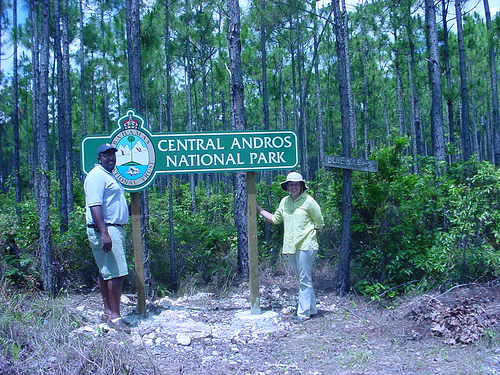 Blue That’s Eric Carey, the Director of Parks with the Bahamas National Trust on the left, and Eleanor Phillips, Director of The Nature Conservancy’s Bahamas Project on the right. (Eleanor and Eric are Bahamians.)
Blue That’s Eric Carey, the Director of Parks with the Bahamas National Trust on the left, and Eleanor Phillips, Director of The Nature Conservancy’s Bahamas Project on the right. (Eleanor and Eric are Bahamians.)
Blue holes are essentially underwater caves formed when the limestone substrate, which forms most of the landmass of the Bahamas, wears away. Fresh water forms a lens on top of the salt water that is underlies the islands, and an amazing ecosystem forms, with different types of fish living in the fresh, brackish, and salty layers of the blue hole. Divers love exploring blue holes, which often connect to eachother, though this is a fairly hazardous activity, as its easy to get lost. I was absolutely fascinated by these natural water parks and did lots of free diving with a snorkel mask.
Above are the three of us (myself in the middle, Tundi Agardy, a marine conservation expert, on the right, and Debra Erickson, with the Kerzner Marine Foundation, on the left) swimming in what is considered a medium-sized blue hole.
Some locals had built a raft, and unfortunately, some of the material used for flotation of the raft drifted off into various parts of the blue hole. Tundi, Debra and I put our swimming skills to use and gathered up the pieces. That’s me with my take above. Everyone thought that this was a great job for the Eco Chick! I agreed.
Here’s the final shot of what we cleaned up. You can also see the unique circular shape of the blue hole behind it.
I will be writing on Andros Island in the future, and I’ll link to the final articles when they are published. Many thanks to everyone on the trip (Ashley, Debra, Tundi, Eric, Eleanor and Shawn) for making it an amazing time.



